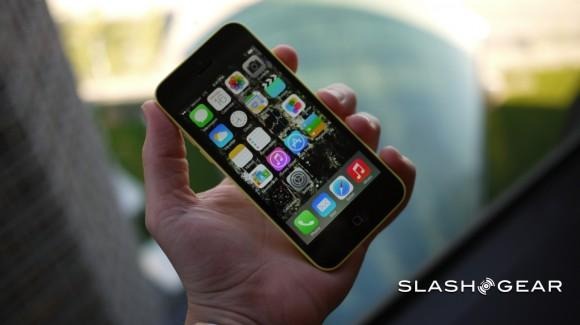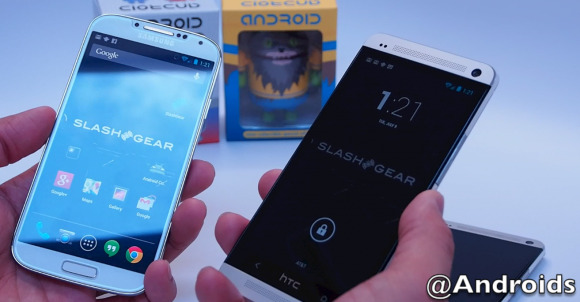There Is No "Apple Trap"
There's a conspiracy theory appearing in print this week summoning up the suggestion that Apple purposefully creates products that become obsolete over time. The very idea that such an article exists – here in 2013, no less – but that it only targets one single company as such makes it clear: someone didn't do their homework. Claims against Apple specifically are made by the NYTimes in an article called "Why Apple wants to bust your iPhone" in its online edition and "Cracking the Apple Trap" in print.
One of the aims of this article could very well be to summon responses like the one we're initiating here. It's not quite a "troll" sort of situation, but the attention author Catherine Rampell is getting as a result of this article is certainly telling. Especially considering the details provided in said article on why it is that Apple would consciously self-destruct its machines, so to speak, is particularly lacking.
Claims here are the following – summed up by the article in question rather simply:
1. Apple may be coordinating the obsolescence of its products.
2. Which is annoying for consumers.
3. But possibly worse for the company.
The first bit of evidence the author gives on this claim is the idea that she's called tech analysts and asked them if their iPhone 4 devices were running slower with iOS 7 installed after the recent iOS update. She suggests that "they said that the new operating system ... was making older models unbearably slow." She goes on to suggest that Apple is to blame for what she must consider a situation unique to the manufacturer:
"Apple phone batteries, which have a finite number of charges in them to begin with, were drained by the new software. So I could pay Apple $79 to replace the battery, or perhaps spend 20 bucks more for an iPhone 5C. It seemed like Apple was sending me a not-so-subtle message to upgrade."
Every battery in every smartphone today has a finite number of charges in it. This is a very basic reality with the engineering of batteries we use today – and have used well through the existence of smartphones, tablets, and the like. The author also suggests that she'd be able to pay $79 or $20 more to buy an iPhone 5c – this suggests there's no such thing as a 2-year contract, dismissing the additional cash incorporated in monthly bills from carriers (there's no such thing as a $99 iPhone 5c off-contract).

The author then compares the gadget industry to the fashion industry, saying they're the same in that they create products that are purposefully less durable than they could be so that they can keep prices down. The author also suggests that people purchase these clothes knowing they'll fall apart.
"I buy clothes from H&M and other low-cost, trend-driven stores knowing full well that the pieces might fall apart after a year's worth of washes. And if the clothes won't be fashionable next year anyway, who cares? Improving the durability — and thereby cost — of the clothes would probably just drive away price-sensitive shoppers like me. Apple has similar considerations."
The next thing the article does is go on to suggest – again, theorizing all of this – that Apple is creating products that are not durable because they've got a strong enough market presence that consumers don't have alternatives to choose from. The suggestion is also made that this situation – this supposed situation – is the same as the international light-bulb cartell stopping the production of long-lasting lightbulbs.
"A company has strong incentives to degrade product durability when it has a lot of market power and when consumers don't have good substitute products to choose from. (That's what happened with the international light-bulb cartel of the early 20th century, which penalized its members for manufacturing bulbs that lasted more than 1,000 hours.)"
These suggestions are made with notes like "economists have theories" and "it might make sense". It's also suggested that because the iPhone 5s' gold iteration is popular, Apple has "brainwash consumers into developing new tastes" which work along aesthetic lines rather than functionality. In other words: you'll purchase anything so long as we say it's cool, or if we slap a new color on it.

Considering the fact that these ideas were presented without substantiation other than theory and completely without hard evidence, it's difficult to take any of it seriously (to say the least). This is all compounded by the fact that it would appear the author didn't think to mention the degrading hardware included in any other manufacturing brand at all, other than a single sentence on how Samsung and HTC were creating more competition for the iPhone, "which should deincentivize planned obsolescence."

As if HTC or Samsung created devices that would magically last forever – or that they'd created competition enough in products that were higher-quality enough that Apple would have to make more robust hardware. That's not happened. The iPhone is still made of glass and aluminum – the Samsung Galaxy S4 is made largely of plastic, and the HTC One is made of essentially the same proportions of aluminum and glass as the iPhone 5/5s.
So where's the sense in all this? It would appear that it's all a conspiracy in and of itself. But for whom?
